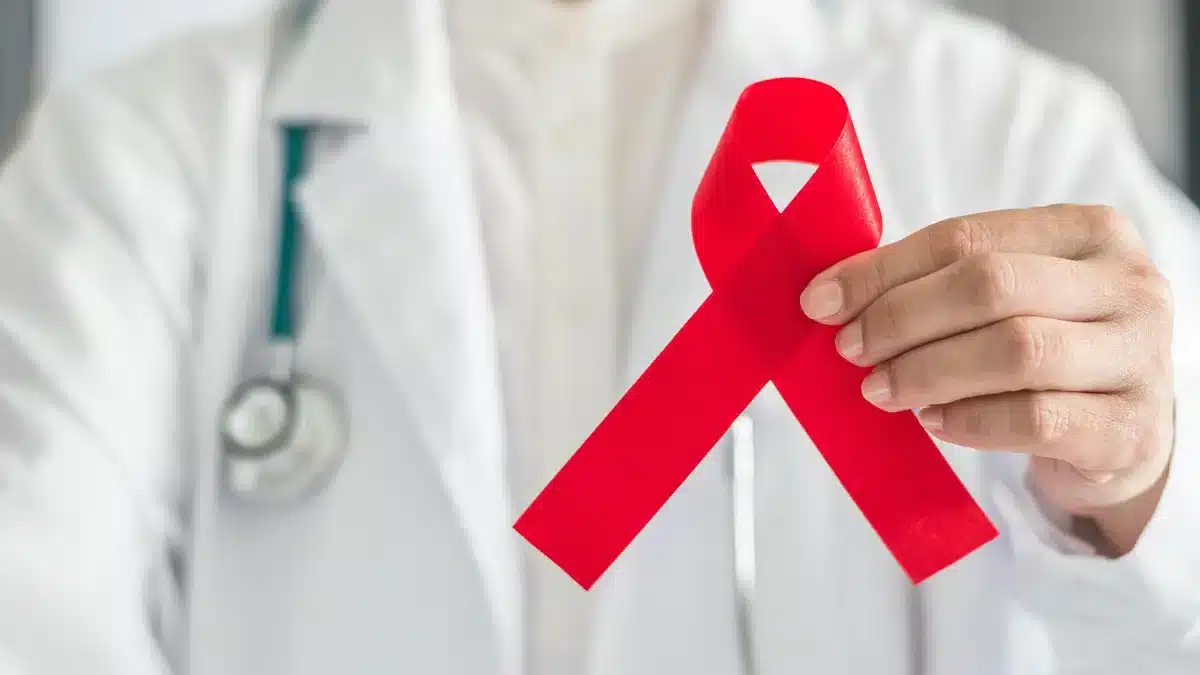Is AIDS an STD? Unraveling the Connection
In the world of sexual health, the term AIDS often prompts questions about its classification as a Sexually Transmitted Disease (STD).
Acquired Immunodeficiency Syndrome (AIDS) is a condition stemming from the Human Immunodeficiency Virus (HIV), which weakens the immune system.
To discern whether AIDS falls under the umbrella of STDs, we must explore the primary modes of HIV transmission, particularly through sexual contact.
This exploration will provide clarity on the association between AIDS and STDs, ensuring a better grasp of the preventive measures essential to maintaining sexual health.
Defining AIDS
AIDS, known as Acquired Immunodeficiency Syndrome, arises from the Human Immunodeficiency Virus (HIV).
HIV attacks the immune system, weakening the body’s defense mechanisms and making it susceptible to various infections and diseases.
Unlike other infections, HIV doesn’t directly cause illness.
Instead, it weakens the immune system, paving the way for opportunistic infections or cancers to thrive.
Modes of transmission
Understanding how HIV spreads is crucial in determining whether AIDS is an STD.
HIV can be transmitted through:
Unprotected sexual contact

HIV is frequently transmitted through sexual activities without the use of protective measures, encompassing both vaginal and anal intercourse.
The virus has the potential to infiltrate the body via mucous membranes located in the genital, anal, or oral regions.
Engaging in protected sexual practices, like the consistent use of condoms, markedly diminishes the likelihood of HIV transmission during intimate activities.
Sharing needles
Intravenous drug use involves sharing needles or syringes, which can transfer HIV-infected blood from one person to another.
Avoiding the sharing of needles and using sterile equipment is crucial to preventing HIV transmission in the context of drug use.
Mother-to-child transmission
The transmission of HIV from an HIV-positive mother to her child can occur during pregnancy, childbirth, or breastfeeding.
With proper medical care and interventions, the risk of mother-to-child transmission can be significantly reduced.
Is AIDS an STD
AIDS is not directly classified as a Sexually Transmitted Disease (STD), but its connection to Human Immunodeficiency Virus (HIV) often raises questions.
HIV is indeed a Sexually Transmitted Infection that can progress to AIDS when left untreated.
While AIDS and STDs differ, their association lies in the primary mode of HIV transmission – through sexual activities.
Having an STD can heighten the risk of acquiring HIV, as certain infections may create openings for the virus to enter the body.
The distinction is crucial: HIV is the virus leading to AIDS, while STDs comprise various infections caused by bacteria, viruses, and parasites.
To prevent STDs, including HIV, practicing less risky sexual behaviors and consistently using condoms is crucial.
Healthcare providers often use the term “infection” instead of “disease,” emphasizing the importance of early detection and treatment to prevent complications.

Erase discomfort, embrace relief – conquer STDs swiftly!
Reclaim your health with superior antibiotic solutions from WowRx.
Levoflox 750mgCiplox 250mgAugmentin 500 125 mgThe link between HIV and STDs
Understanding the intricate relationship between HIV and various STDs is vital for effective prevention and education.
Some of them include:
Common transmission routes
HIV and many STDs share common routes of transmission, primarily through sexual contact.
This association emphasizes the importance of safe sex practices to prevent the spread of both HIV and other STDs.
Increased vulnerability to HIV
Having another STD can increase a person’s susceptibility to HIV.
Infections such as Syphilis, Herpes, and Gonorrhea can create open sores or lesions, providing an entry point for HIV.
Education and Prevention
Combating the spread of HIV involves addressing the broader spectrum of Sexually Transmitted Infections.
Educational programs often focus on promoting safe sex practices, regular testing, and open communication about sexual health.
Prevention

The importance of prevention cannot be overstated when it comes to AIDS and other STDs.
Utilizing condoms consistently and correctly during sexual intercourse proves to be an extremely effective strategy in diminishing the likelihood of HIV transmission.
Additionally, knowing your partner’s HIV status and encouraging open communication about sexual health are essential components of prevention.
Conclusion
While AIDS is not directly labeled as a Sexually Transmitted Disease (STD), its close link to the Human Immunodeficiency Virus (HIV) calls for a clear understanding.
HIV, a sexually transmitted infection, can progress to AIDS without proper treatment.
Though AIDS and STDs differ, they share a common ground in their transmission through sexual activities.
Having an STD increases the risk of acquiring HIV. Prevention is key, with consistent condom use and open communication about sexual health playing vital roles.
By prioritizing prevention, we empower ourselves to protect against the complex web of HIV and other sexually transmitted infections.
Frequently Asked Questions
Is AIDS always transmitted through sexual activity?
No, while sexual activity is a common mode of transmission, AIDS can also be spread through sharing needles among drug users and from an infected mother to her child during childbirth or breastfeeding.
How effective are condoms in preventing HIV transmission?
Condoms play a crucial role in minimizing the risk of HIV transmission during sexual activity. Health authorities widely advocate the consistent and proper use of condoms as a fundamental preventive measure.
Can you get AIDS from kissing or casual contact?
No, HIV is not transmitted through casual contact like kissing, hugging, or shaking hands. It requires direct contact with specific bodily fluids such as blood, semen, vaginal fluids, and breast milk for transmission.
Is there a cure for AIDS?
As of now, there is no cure for AIDS, but medical advancements have led to effective treatments that can manage the condition and improve the quality of life for those living with HIV.
How often should I get tested for HIV?
Regular testing for HIV is recommended, especially if you engage in high-risk behaviors. Getting tested allows for early detection, timely medical intervention, and the adoption of preventive measures to protect yourself and your partner.
WowRx uses only high-quality sources while writing our articles. Please read our content information policy to know more about how we keep our content reliable and trustworthy.






